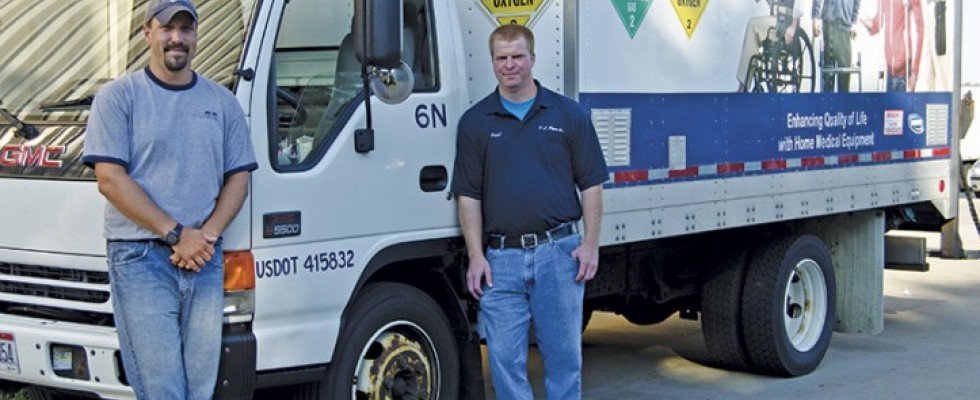
Missy Cross is a veteran in Ohio's homecare industry who is paying close attention to recent CMS oxygen reimbursement cuts that can be as high as 16 percent. CMS announced the cuts on March 15.
Cross estimates that she is mitigating these cuts by saving 38 percent or more on her oxygen costs by adopting the OxyGo nondelivery business model. OxyGo is a marketer of portable oxygen concentrators (POCs) based in Cleveland, Ohio.
For 21 years, Cross has overseen DME equipment for OE Meyer, a Sandusky, Ohio-based HME business with five store locations.
"The difference between using POCs and cylinders is labor," says Cross, reflecting on the growing POC use trend that allows HME businesses to offset cuts and improve profitability with every new patient, patients who are distant or patients who use a lot of tanks.
"There is no labor on the back end," Cross continues. "The trickle-down cost savings from patients using POCs is substantial. The average oxygen tank delivery probably costs about $50. If I can schedule just one delivery per month rather than four between 50 patients, the savings are huge."
"There are so many benefits. POCs not only cut our delivery costs, but they also have an impact on our business going forward. As our business grows, we do not have to hire new drivers as frequently and that is part of the 38 percent or more of savings POCs afford us," she says.
OE Meyer is a significant player in the northeast Ohio homecare equipment market. Nine delivery trucks operate out of its five store locations, delivering oxygen to patients within a 70-mile radius of Sandusky. About 60 percent of OE Meyer's business is rural, which means all nine delivery trucks are out on the road every day.
Cross notes that she has seen POC reliability increase dramatically during the past few years and that she no longer gets calls from patients related to battery life or POC performance problems. She says POC manufacturers today have done a good job of simplifying the use of the machines so that patients find them easy to work with.
Cross also notes that POCs are being asked for more and more by patients who see their portability advertised on TV. She has noticed that many of her patients are being diagnosed earlier in their disease progression than ever before. This means many patients are younger than typical patients in the past, and they are living more active lifestyles. These younger patients crave the mobility and freedom POCs provide. For example, POCs are FAA-approved for air travel far more often than tanks, even from a home fill system. All compressed gas cylinders are prohibited for use onboard commercial aircraft.
Jon Schultz, sales director for OxyGo, points out that the POCs he markets never run out of oxygen because patients can use and charge their units themselves at home or in their cars.
"Putting patients on a POC is a win-win for everyone," says Schultz.
Cross linked the advantages of using POCs to an improved quality of life for the patients and more productive cost efficiencies for the HME provider.
"Patients find the POC easy to work with and enjoy a more flexible, higher quality of life with the mobility the machine offers. POCs also help us eliminate so many overhead costs that just don't show up to most accountants, but they are definitely there," she says.
Schultz points out that cylinder delivery would include overhead costs such as haz-mat risks, training and placarding. The fact that delivery of a POC to a patient can be accomplished in a car or van, as opposed to a specialized truck requiring a CDL-certified driver, is another cost savings for businesses.
